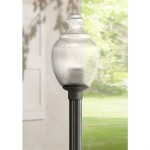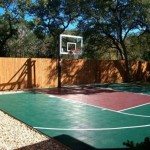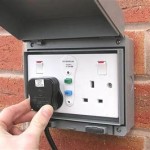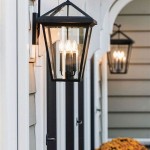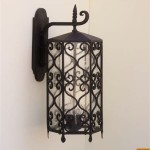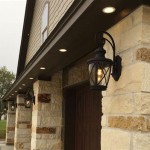Illuminating Your Outdoor Oasis: Backyard Lighting Ideas
Backyard lighting transcends mere functionality; it transforms an outdoor space into an inviting and usable extension of the home, fostering ambiance, enhancing safety, and highlighting the natural beauty of the landscape after dusk. Strategic lighting elevates the backyard from a dark, unused space to a focal point for relaxation, entertainment, and aesthetic appreciation. This article explores various outdoor lighting ideas, providing insights into design principles and practical applications for creating a captivating and functional backyard environment.
The selection and placement of outdoor lighting fixtures require careful consideration to achieve the desired effect. Factors such as the size and layout of the backyard, the architectural style of the home, and the intended use of the space all play a crucial role in determining the optimal lighting scheme. Furthermore, energy efficiency and light pollution concerns should be addressed when selecting lighting technologies and designing the overall lighting plan.
Defining Zones and Purposes
Before embarking on the selection of specific lighting fixtures, it is essential to define the different zones within the backyard and identify the primary purposes of each zone. Common backyard zones include patios or decks for dining and lounging, pathways for safe navigation, garden areas for showcasing plants and features, and water features for adding visual interest. Each zone requires a tailored lighting approach to fulfill its specific function and contribute to the overall ambiance of the backyard.
For example, a patio area designated for dining might benefit from warm, ambient lighting provided by string lights or pendant lights. This type of lighting creates a cozy and inviting atmosphere, perfect for enjoying meals or entertaining guests. In contrast, pathways require more focused and functional lighting to ensure safe passage after dark. Path lights, step lights, or even well-placed spotlights can effectively illuminate pathways without creating harsh glare.
Garden areas offer a unique opportunity to showcase the beauty of plants and landscaping. Uplighting trees and shrubs can create dramatic shadows and highlight their unique forms. Spotlighting specific features, such as sculptures or water features, can draw attention to these focal points and add visual interest to the garden at night. Downlighting from trees or pergolas can provide a soft, diffused light that enhances the overall ambiance of the garden.
Consideration should also be given to security lighting. Motion-activated floodlights can deter intruders and provide added safety and security around the perimeter of the property. These lights should be strategically placed to cover vulnerable areas, such as entrances and driveways, without creating excessive light pollution or disturbing neighbors.
Types of Outdoor Lighting Fixtures
The market offers a diverse range of outdoor lighting fixtures, each with its own unique characteristics and applications. Understanding the different types of fixtures and their respective strengths and weaknesses is crucial for selecting the right lighting for each zone in the backyard.
Path Lights: These low-level fixtures are designed to illuminate pathways and walkways, providing safe passage after dark. Path lights are typically mounted on stakes or posts and emit a soft, diffused light that guides the way without causing glare. They are available in a variety of styles and materials, ranging from traditional to contemporary, to complement the overall aesthetic of the backyard.
Spotlights: Spotlights are directional lights that are used to highlight specific features, such as trees, shrubs, or sculptures. They can be mounted on stakes or posts and aimed to create dramatic shadows and highlight the textures and forms of the objects they illuminate. Spotlights are available in a range of wattages and beam angles to achieve different lighting effects.
Floodlights: Floodlights are high-intensity lights that are used to illuminate large areas, such as driveways or patios. They provide broad coverage and are often used for security purposes. Floodlights can be mounted on walls, eaves, or poles and can be motion-activated for added convenience and energy savings.
String Lights: String lights are decorative lights that are strung between trees, posts, or buildings to create a festive and inviting atmosphere. They are available in a variety of styles, from classic Edison bulbs to colorful fairy lights, and can be used to add a touch of whimsy and charm to any backyard space. String lights are often used for patios, decks, and outdoor entertaining areas.
Pendant Lights: Pendant lights are hanging fixtures that are typically used to illuminate outdoor dining areas or seating areas. They provide a focused and downward-directed light that is perfect for tasks such as reading or eating. Pendant lights are available in a variety of styles and sizes, from traditional lanterns to modern geometric designs.
Deck Lights: Deck lights are small, recessed lights that are installed into the surface of a deck to provide subtle and ambient lighting. They are typically used to illuminate the edges of the deck or to highlight specific features, such as steps or railings. Deck lights are available in a variety of colors and finishes to complement the deck's aesthetic.
Underwater Lights: Underwater lights are specially designed fixtures that are used to illuminate water features, such as ponds or fountains. They create a dramatic and mesmerizing effect, highlighting the movement and beauty of the water. Underwater lights must be waterproof and submersible and should be installed by a qualified electrician.
Energy Efficiency and Light Pollution
As environmental awareness grows, energy efficiency and light pollution are increasingly important considerations in outdoor lighting design. Selecting energy-efficient lighting technologies and minimizing light trespass can help reduce energy consumption, protect wildlife, and preserve the beauty of the night sky.
LED Lighting: Light-emitting diodes (LEDs) are the most energy-efficient lighting technology available. LEDs consume significantly less energy than traditional incandescent or halogen bulbs, while providing comparable or even superior light output. LEDs also have a much longer lifespan, reducing the need for frequent replacements. Choosing LED fixtures for all outdoor lighting applications is a significant step towards reducing energy consumption and environmental impact.
Solar Lighting: Solar-powered lights offer a sustainable and eco-friendly option for outdoor lighting. These lights harness the power of the sun during the day to charge batteries, which then power the lights at night. Solar lights are particularly well-suited for areas where it is difficult or expensive to run electrical wiring. However, the performance of solar lights can be affected by weather conditions and the amount of sunlight they receive.
Light Pollution Reduction: Light pollution, also known as light trespass, refers to the excessive or misdirected use of artificial light, which can disrupt natural ecosystems and obscure the view of the stars. To minimize light pollution, it is important to choose fixtures that direct light downwards and avoid excessive brightness. Shielded fixtures, which direct light only where it is needed, are particularly effective at reducing light trespass. Additionally, using timers or motion sensors can help ensure that lights are only on when they are needed.
Color Temperature: The color temperature of light, measured in Kelvin (K), affects the perceived warmth or coolness of the light. Warmer light, with a lower color temperature (e.g., 2700K), creates a cozy and inviting atmosphere, while cooler light, with a higher color temperature (e.g., 5000K), is brighter and more stimulating. For backyard lighting, warmer light is generally preferred, as it creates a more relaxing and comfortable ambiance. Cooler light may be appropriate for security lighting or task lighting.
Smart Lighting Systems: Smart lighting systems offer advanced control and customization options for outdoor lighting. These systems allow users to control lights remotely via smartphone or tablet, set schedules, and adjust brightness and color temperature. Smart lighting systems can also integrate with other smart home devices, such as security cameras and thermostats, to create a truly connected and automated outdoor environment. Furthermore, features like geofencing can automatically turn lights on or off based on your location, optimizing energy consumption and enhancing security.
By carefully considering the various factors discussed in this article, homeowners can create a backyard lighting scheme that is both functional and aesthetically pleasing. Thoughtful design, combined with energy-efficient technologies, can transform an ordinary outdoor space into a captivating and inviting oasis that can be enjoyed for years to come. Lighting is an investment in both property value and the quality of outdoor living.

28 Backyard Lighting Ideas How To Hang Outdoor String Lights

10 Best Outdoor Lighting Ideas Landscape Design Secrets A Piece Of Rainbow

19 Stylish Outdoor Lighting Ideas The Best Patio

The 7 Best Ways To Light Up Your Backyard Sansbury Electric

68 Inspiring Landscape Lighting Ideas For Every Outdoor Space Design Front Yards

Top 5 Backyard Lighting Ideas Mike S Landscape

Backyard Lighting Ideas Homedepot Ca

5 Summer Outdoor Lighting Ideas You Ll Love

Outdoor Lighting Ideas Lowe S

Backyard Lighting Ideas Homedepot Ca
Related Posts
